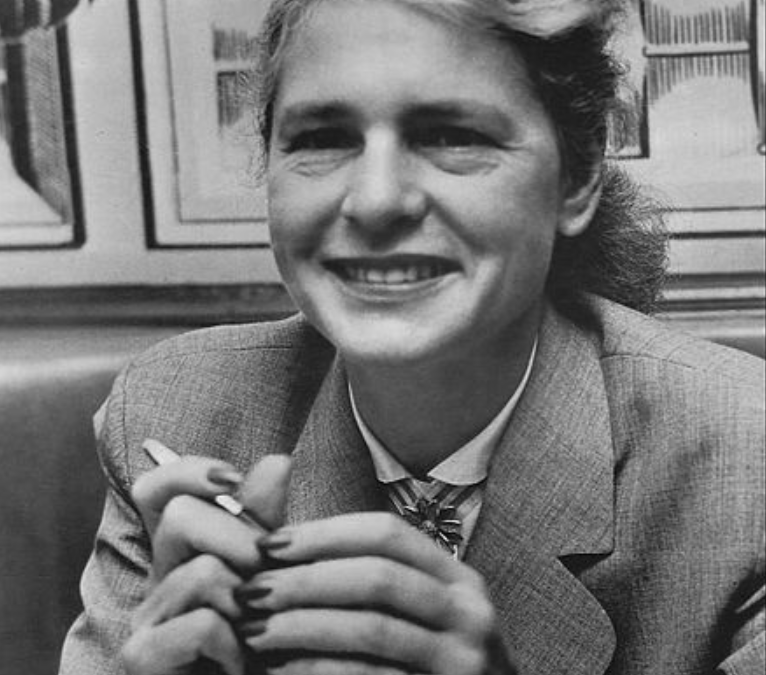Margaret Bourke-White went where few women, and not too many men, had been. She was the First Woman war correspondent, the First Woman allowed in combat arenas. She was also the First Westerner to photograph Soviet industry and the First Woman to have a photo on the cover of Life magazine.
Margaret White (Bourke was her mother’s maiden name, which she appropriated later) had a rocky academic career. She attended seven different universities, studying herpetology paleontology, zoology, art, swimming and aesthetic dancing. She also studied photography at the Clarence H. White (no relation) School of Photography in New York City. By the time she graduated from Cornell University in 1927, after providing the school newspaper with pictures of the campus, her love for photography had intensified. She set up her own commercial photography studio in Cleveland where she specialized in industrial photography. Her success contributed to her invitation to photograph Soviet industry in 1930.
She was an associate editor and staff photographer for Fortunemagazine when, in 1936, Henry Luce hired her as the First Woman photojournalist for Lifemagazine. That same year she became the First Woman to have a cover on Life. Her photos of the Fort Peck Dam project were featured in an article as well.
Bourke-White took photos during the depression that are said to rival those of Dorothea Lange (another student of the Clarence H. White School of Photography). After publishing her photos in Fortune, she published the book You Have Seen Their Faceswith Erskine Caldwell (whom she married for a short while). She later took photos of how Nazism was affecting Europe and how Communism was affecting Russia. It was at this time that she captured a rare picture of a smiling Stalin.
She spent World War II capturing history as it exploded, literally, around her. She was the only photographer on the scene in Moscow when the Germans raided the Kremlin, was with the Air Force in North Africa, and photographed Buchenwald as she traveled through Europe with General Patton as the war concluded. She admitted later, that “Using a camera was almost a relief. It interposed a slight barrier between myself and the horror in front of me.”
In all, Bourke-White was “torpedoed in the Mediterranean, staffed by the Luftwaffe, stranded on an Arctic island, bombarded in Moscow, and pulled out of the Chesapeake when her chopper crashed.” Her nickname became “Maggie the Indestructible.”
After the war she photographed the violence in the Pakistan-Indian partition and, at that time, took an iconic photograph of Ghandi, shortly before he was assassinated. She also photographed the unrest in South Africa, and the Korean War.
In her 50’s she recognized the symptoms of Parkinson’s disease but did not succumb to it readily, undergoing painful surgeries and treatment. Although her work was limited she continued to write and published her autobiography,Portrait of Myself. In all she published eleven books.
Bourke-White said that if you “saturate yourself with your subject…the camera will all but take you by the hand.” This may be accurate, but her eye for truth, her ability to see more in others than their faces, her appreciation for architectural detail, and her sense of the beauty of the ordinary were innate gifts. Today her photographs are in museums throughout the United States.

